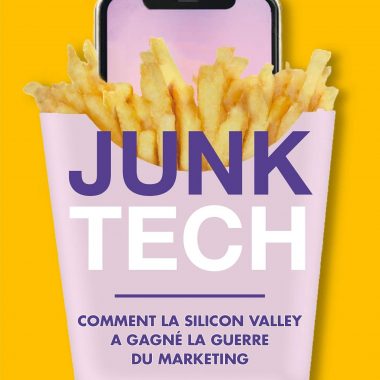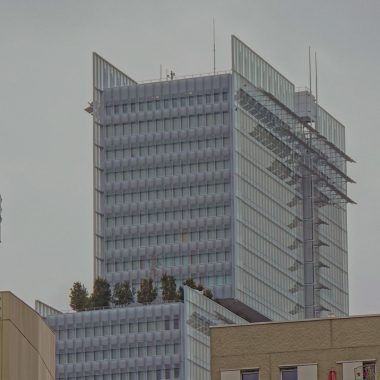Xavier DESMAISON is president of the Antidox group, which assists a hundred or so business leaders and large organizations in their communication and opinion strategies, with a strong digital focus. He also chairs the association Civic Fab, dedicated to the fight against “fake news” and online hate. A lecturer at Sciences Po, he recently published “Dans la tête des gilets jaunes” (VA Éditions, January 2019) and “Le Bûcher des Vérités” (Hermann, November 2019).
Welcome to a world of massive and segmented audiences!
Today, President Macron is being interviewed by the digital video media outlet, Brut. in the wake of a viral video published in Loopsider. On a different note, a major French think tank, the Choiseul Institute, partnered with Antidox to launch a new economic media: Choiseul Magazine. It is clear to everyone that the media world is undergoing accelerated change, which requires leaders to implement new strategies in their approach to the public space.
After conducting an interview on Al Jazeera, articulating his geostrategic vision in the excellent Grand Continent, tweeting his response to the latest security law crisis, here is our president, live on Brut! It’s all part of a strategy that is already underway. The same strategy that led him to congratulate the new graduates on TikTok. This strategy reminds us of Jacques Pilhan’s rule: if “reality is in the post”, which conjures up the same images in everyone’s mind, “the contrast of audiences, who all, at a minimum,have something in common, is done through complementary media”. But because of the porosity of the public space and the new mechanics of virality, visibility among a targeted audience often allows for a nationwide impact, like the famous “Ola” phenomena observed in football stadiums.
Large underground audiences
Digital technology has massively freed up speech and exponentially increased the number of media outlets in the public space: everyone can become a media outlet if they wish. The audiences of certain individuals can be colossal and exceed that of established media: the talented youtuber Hugo Decrypte alone has 1 million subscribers, for whom he analyses current events in a sober, clear and balanced manner. This myriad of new media is helping to shape opinion and is leading to vast shifts in opinion , from “yellow jacket” Facebook groups to those supporting Professor Raoult, with several hundred thousand followers.
Many entrepreneurs, aware of the possibility of creating large audiences, have set up business models to build and develop them. Some states have also become interested. This race for power leads them to tap into societal trends that are often hard to find in traditional media coverage. Brut. has long been the preferred media of the “yellow jackets” thanks to Rémy Buisine’s live coverage. AJ+, the digital extension of Al Jazeera, Qatar’s influential channel, has widely shared the feeling of Islamophobia and “double standards” felt by portions of the Muslim community following the reactions to the murder of Samuel Paty. RT News, Russia’s influential media, after having heavily covered the violent clashes between the “yellow jackets” and police officers, made news with a video of a police officer being beaten by the crowd during the demonstration on the global security law. Melty, the leading media for the younger generation, announced yesterday that it had bought the supersoluce website to support the massification of new entertainment uses. The editor-in-chief of Loopsider noted on Twitter, following the broadcast of the video of Michel Zecler’s beating: “What a day. This morning, we never thought our video would have such an impact. Over 12 million views… We are keeping Michel in our thoughts tonight. We have touched upon something very sensitive in French society. Let’s hope it lasts. Twelve million views in a few hours: a figure to be compared with the results of an average news programme (6 million for TF1).
And these media brands should not hide the power of other digital media, brands and Youtubers. The French government’s community manager recently celebrated on Twitter the fact that he had reached an aggregate audience of one million people on this social network: a significant figure, but one that shows the relative weight of public authorities and institutional platforms, which begins to explain the fragility of its strength of conviction in crisis situations in France (regarding vaccination, for example) or internationally (explaining French-style secularism). The government, in its fight against certain fake news at the heart of the Covid-19 crisis, sought out to create a platform of ‘quality’ media brands, taking note of its low personal audience. The government was hit with criticism from those who do not think that it is the government’s place to determine the level of quality of this or that media outlet.
Building audiences through new communication formats
In order to build up large audiences, similar to and sometimes larger than those of the major traditional media such as France TV Info (2 million subscribers on Facebook), TF1 (4.6 million) and BFM (3.7 million), new media have explored new digital spaces. Being in the news, producing strong and emotional content, aggregating audiences, identifying new ways to play with the algorithms of the different social platforms and creating virality, are the primary challenges of these platforms. The tools are tried and tested: a simple (sometimes simplistic), fast-paced, emotional story (in order: anger, sadness, love), credible (premium on live and “raw” content without intermediaries!). The classic format, copied from American models, was defined in France by Brut. This format is based on the following principles: videos of less than a minute, with a strong hook, regular bursts of animations (to reactivate our short attention spans) and a closing call-to-action (click, share, comment…). Dominant because it was adapted to Facebook ౼ today it is reinvented on Instagram, Snapchat, Youtube, TikTok or Twitch, each of which requires adapting the same idea to their specific codes. For example, after joining TikTok, Versailles launched a successful format of hyperlapse videos of palace tours, without commentary and with contemporary music. Youtube allows the development of longer formats (about ten minutes) or very long, more adapted to its audience. The famous film Hold-Up, which lasts more than 2 hours and 43 minutes, has nevertheless attracted a large audience. In the long term, these new media outlets intend to target major media platforms, such as Netflix, Amazon Video, etc., to position long-form content.
“Medium is message”: new economic models generating opportunities and risks for public debate
Why build up such sizable audiences? The first issue is economic. The economic model is different from the traditional press. For the latter, the subscription guarantees a form of economic security and independence that allows journalists to work on subjects over time, to dare to publish information that would be detrimental to their interests and to avoid becoming outdated. Of course, this independence is never total, particularly because of capital control, the need for advertisers and the desire to create ‘shock’ coverage to sell on newsstands. And journalists are not free of limitations or biases. Everyone has seen the risky personal positions taken on Twitter by journalists from the Washington Post or the New York Times in their approach to French secularism, which have sometimes led to questionable reporting. But this model allows for the creation of sufficiently large editorial teams, capable of collectively reviewing articles and having recurrent resources that avoid possible manipulation.
With regard to this model, Brut., melty, Loopsider and the others are funded by digital advertising, in particular the so-called “native” content, built for a brand. This model, which we use and promote regularly at Antidox, allows a brand to reach an audience with considerable force. The digital media also makes a living from more traditional digital advertising (banners), often in a programmatic mode. For example, bought or sold in a semi-automatic way on dedicated marketplaces: in short, the more people click on an article, the more money the media gets from advertisers.
This model has an essential quality, crucial for our democracies: it spreads information to a large audience. And it allows certain issues to be brought into the public arena, as Loopsider has shown. It has its biases. It can sometimes generate the mass production of low-quality content or “shock” content (called “clickbait” in particular: since we are paid according to the number of page views, we have to attract the maximum number of readers with shocking headlines, regardless of the quality of the content), which is not the case, of the mainstream media outlets mentioned. It is also sometimes criticized in the editorial offices of traditional media if it disrupts the work of the media. This week, the Society of Journalists (SDJ) of the science magazine Sciences&Vie, which was bought by the media group Reworld Medias (€200 million in turnover in the first half of 2020), put forward a motion of no confidence in the title’s director, Karine Zagaroli. At issue is the fact that articles intended to increase the audience are not written by the title’s scientific journalists on digital media. This issue concerns all media, traditional and new. Overall, it should be stressed that the mainstream media has created appropriate organisations to respect the independence of their journalistic structure and ensure the editorial quality of their content.
The main weakness of this business model is its fragility. In the United States, the key competitors, Buzzfeed, the HuffPost, Explicite, Mashable or Vice Media have announced restructurings in 2018 and 2019. In France, Konbini has just placed itself under an ad hoc mandate in October 2020, the failure of the internationalisation plan having generated tensions within the governance. It is a model that causes media to become dependent on social network algorithms (a change in Facebook’s rules can lead to significant audience drops), requires sustained investment and creative talent to be powerful on the core social networks, is tricky to set up (journalists, by definition, do not want to do commercial work), has very little capacity for internationalisation, and therefore at this stage is largely supported by the financial investment of families. In short, the free model based on viralization is very difficult to sustain in the face of the GAFAs, which are paid directly from the audiences generated by these media. It is also being challenged by “proprietary” models, which we are also developing at Antidox: a company or advertiser creates its own media and its own video or written content, distributed through social media, influencer marketing and native advertising. The cost and reach are broadly similar to campaigns in the major video media outlets. It allows the advertiser to develop its own community and spread its brand and vision, instead of addressing the communities constituted by the video media (both legitimate goals).
The question of the influence of organisations and states in the public space
The exploitation of these huge audiences does not only correspond to an economic objective. It is also a question of influence. An institution, a think tank, a leader, a star, a state, a company are above all communities of people with a vision, a culture and a flow of information. The current relativism generated, in part, by the multiplication of perspectives and media that we have just described, forces each party to strengthen its community, to irrigate it with a vision, to boost competency and expertise. It is now an essential task for organization leaders and communication and marketing departments to build up, develop and structure their audience, and to make their voice heard in the public arena and among close communities. Hence the need to speak out more. The objective is not always to speak to everyone, but to address a gather its targeted community (which can of course, for certain public services, be very large). When Décathlon cut its CNews advertising budgets, the company saved money, a plus during the Covid-19 period, but it also sent a clear message to its customers. It made a choice and asserted its personality, as an activist. It is a way of operating quite similar to political methods: first stabilising a base, then aggregating different opinions and sociologies around a coherent discourse.
On a geopolitical and cultural scale, this question of influence takes on new importance in the current context of the generalisation of geopolitical wars of influence. The United States structurally projects its soft power, through its media, its language, the power of its platforms and its media. The Russians have strengthened their power through Sputnik (1.3 million subscribers on Facebook) and RT News (1.5 million), whose current strategy is to cultivate a larger audience in rural and suburban France. All indications show that China wants to invest in our public spaces, in Europe, Africa and the Middle East. Other states, notably in the Middle East, have bolstered their influence as well. This therefore raises the recurring question of French media capacities internationally and European media capacities within the European Union.
By Xavier Desmaison, CEO of Antidox









